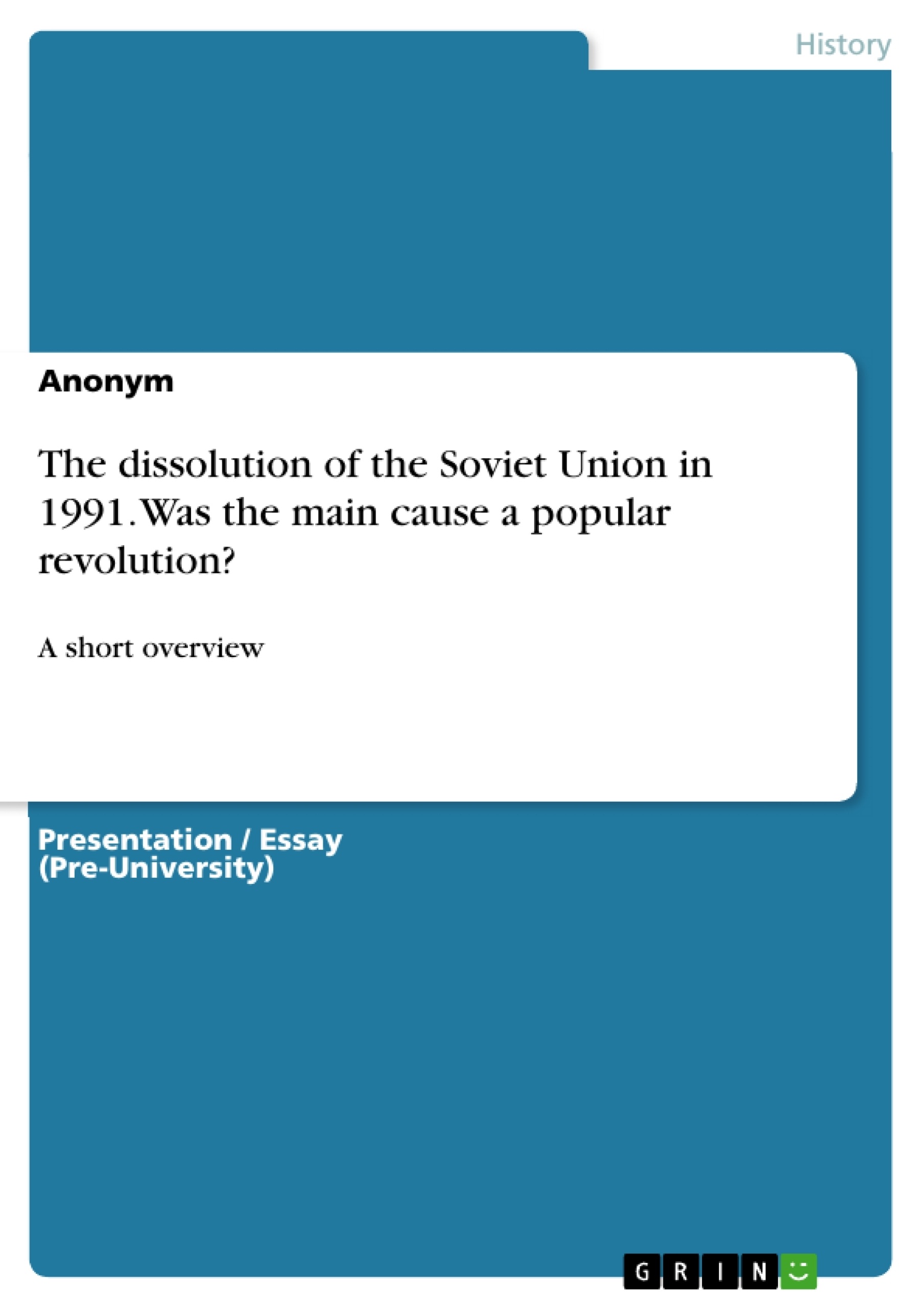The essay discusses the main causes of the dissolution of the Soviet Union - the liberalisation of politics, economic decline, changes in social consciousness, the loss of the Eastern European sphere of influence, and nationalism within the republics of the USSR.
The August coup of 1991 is named as the short-term, final trigger. It concludes that the main cause of the collapse was not a popular revolution of the 'ordinary people'. Rather, Gorbachev's policies of glasnost and perestroika weakened the Communist Party's own power structures, thereby destroying all forms of control and exposing the disparities between propaganda and real life.
Inhaltsverzeichnis (Table of Contents)
- The Collapse of the Soviet Union
- Liberalisation of Politics
- Glasnost
- The Role of the CPSU
- Economic Decline
- Perestroika
- The Interlinkage of Economic and Political Reform
- Changes in Social Consciousness
- Nationalism Within the Republics of the USSR
- Eastern Europe
- Poland
Zielsetzung und Themenschwerpunkte (Objectives and Key Themes)
The purpose of this text is to analyze the extent to which the dissolution of the Soviet Union in 1991 was caused by a popular revolution. The text examines the various factors contributing to the collapse, including internal and external influences. It focuses on the impact of Gorbachev's policies of glasnost and perestroika, and their role in shaping political, economic, and social changes within the Soviet Union.
- The impact of Gorbachev's policies of glasnost and perestroika on Soviet society.
- The role of nationalism in the republics of the USSR in contributing to the Soviet collapse.
- The influence of economic decline and the transition to a market economy on the disintegration of the Soviet Union.
- The relationship between political liberalization and social consciousness in fostering the demise of the Soviet system.
- The significance of events in Eastern Europe, particularly in Poland, in shaping the Soviet Union's final collapse.
Zusammenfassung der Kapitel (Chapter Summaries)
The text begins by outlining the various factors that led to the collapse of the Soviet Union, including political liberalization, economic decline, and changes in social consciousness. It then focuses on the impact of Gorbachev's policies of glasnost and perestroika, exploring their effects on the political landscape, the economy, and Soviet society. The text also examines the role of nationalism in the republics of the USSR, highlighting how it contributed to the growing desire for independence. It concludes by analyzing the influence of events in Eastern Europe, particularly in Poland, on the Soviet Union's final collapse.
Schlüsselwörter (Keywords)
The text examines the collapse of the Soviet Union through the lens of political liberalization, economic decline, changes in social consciousness, nationalism, and the influence of events in Eastern Europe. Key concepts explored include glasnost, perestroika, the role of the CPSU, the transition to a market economy, and the emergence of nationalist movements. The text draws on the experiences of Poland, examining the impact of Solidarity and its role in the collapse of the Polish Communist regime.
- Quote paper
- Anonym (Author), 2020, The dissolution of the Soviet Union in 1991. Was the main cause a popular revolution?, Munich, GRIN Verlag, https://www.grin.com/document/933464



